#fatlosscoaches
Explore tagged Tumblr posts
Text
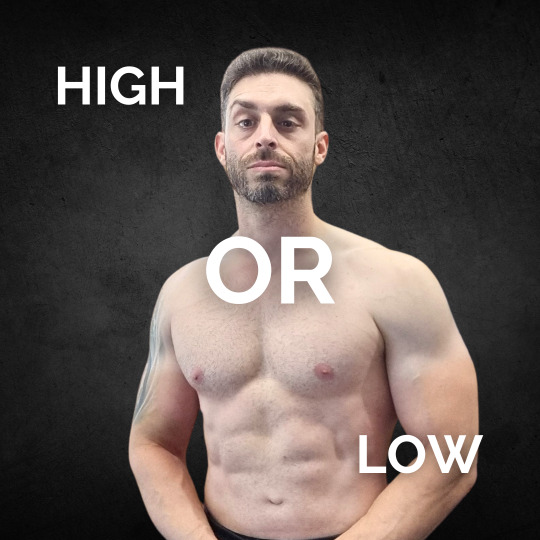
High Reps vs Low Reps: What’s Better
Introduction
When it comes to resistance training, there's often a debate about whether high reps or low reps are more effective for building muscle. Some swear by the benefits of high rep training, while others argue that low reps with heavier weights yield superior results. So, are high reps really better than low reps? Let's dive into the research and explore the merits of each approach.
Are High Reps Better Than Low Reps Studies?
In the realm of exercise science, there is a substantial body of research dedicated to investigating the comparative benefits of high rep versus low rep training methods. High reps, characterized by performing a larger number of repetitions per set, have consistently demonstrated advantages in enhancing muscular endurance and cardiovascular fitness. This is primarily attributed to the extended duration of muscular tension experienced during high rep sets. Conversely, low rep training, which involves performing fewer repetitions per set with heavier weights, is conventionally associated with promoting strength gains and hypertrophy, or muscle growth.
One notable study, which was published in the Journal of Strength and Conditioning Research, aimed to directly compare the effects of high rep and low rep resistance training protocols on both muscle strength and size. The study involved participants performing high rep sets consisting of 12-15 repetitions per set, as well as low rep sets comprising 3-5 repetitions per set. Over the course of the study, significant improvements in both strength and hypertrophy were observed in participants following both high rep and low rep training regimens. However, it was noted that the group engaging in low rep training experienced notably greater gains in maximal strength compared to their high rep counterparts.
These findings underscore the multifaceted nature of resistance training adaptations and highlight the importance of considering individual training goals and preferences when selecting a training protocol. While high rep training can be advantageous for improving muscular endurance and cardiovascular health, low rep training with heavier weights remains an effective strategy for maximizing strength gains and promoting muscle hypertrophy. Ultimately, the choice between high rep and low rep training should be guided by specific training objectives, allowing individuals to tailor their workout routines to align with their desired outcomes.
Can I Build Muscle with Low Weight High Reps?
Certainly, building muscle with low weight high reps is indeed achievable, although it requires a nuanced understanding of training principles and careful execution. Contrary to the conventional belief that heavy weights are essential for muscle growth, lighter weights and higher repetitions can also effectively induce hypertrophy, especially for individuals who are new to resistance training or who prioritize enhancing muscular endurance.
The key to successfully building muscle with low weight high reps lies in the principle of progressive overload. While heavier weights are typically used to recruit a greater number of muscle fibers and generate mechanical tension, lighter weights can still stimulate muscle growth when lifted to near-failure during high rep sets. By pushing muscles to their limits through a high volume of repetitions, metabolic stress is induced, triggering muscle adaptation and growth.
It's important to note that the efficacy of low weight high rep training for muscle building depends on several factors, including individual genetics, training experience, and consistency. Beginners or individuals with limited access to heavier weights can benefit significantly from incorporating high rep training into their routines to initiate muscle growth and develop a solid foundation of strength.
To maximize muscle growth with high reps, it's essential to focus on form, control, and intensity throughout each repetition. Lifting weights that challenge muscles and lead to fatigue by the end of each set is crucial for stimulating hypertrophy. Additionally, incorporating techniques such as drop sets, rest-pause training, and tempo variations can further enhance the effectiveness of low weight high rep workouts.
In summary, while heavy weights are commonly associated with muscle building, low weight high rep training can also be a viable approach, particularly for beginners and those prioritizing muscular endurance. By lifting weights to near-failure and maintaining proper form, individuals can effectively stimulate muscle growth and achieve their fitness goals through high rep resistance training.
Is it Better to Do Higher Reps or Lower Reps?
Determining whether it's better to focus on higher reps or lower reps during your workouts ultimately hinges on your individual fitness objectives and preferences. The choice between these two approaches should be guided by a clear understanding of your goals and how each rep range aligns with them.
If your main aim is to enhance muscular endurance, sculpt and tone your muscles, or bolster your cardiovascular fitness, incorporating higher reps into your training routine can be advantageous. Higher rep sets, typically consisting of 12 or more repetitions per set, are effective at inducing metabolic stress and promoting muscular endurance. By performing a greater number of repetitions with lighter weights, you can challenge your muscles over an extended period, ultimately improving their ability to sustain effort over time.
Conversely, if your primary focus is on maximizing strength gains and increasing muscle size, lower reps with heavier weights are generally favored. Lower rep sets, typically ranging from 1 to 6 repetitions per set, prioritize mechanical tension and neural adaptations, facilitating improvements in strength and power. Lifting heavier weights for fewer repetitions recruits more muscle fibers, leading to greater gains in muscle mass and overall strength.
It's important to note that neither higher reps nor lower reps are inherently superior to the other; rather, their efficacy depends on how well they align with your specific fitness goals. Incorporating a combination of both higher rep and lower rep training into your regimen can provide a well-rounded approach to achieving overall fitness and performance objectives. Experimenting with different rep ranges, adjusting training variables, and listening to your body's response can help you determine the most effective strategy for reaching your desired outcomes.
Conclusion
In conclusion, both high reps and low reps have their advantages and can be effective for muscle building when incorporated strategically into a comprehensive training program. Whether you prioritize muscular endurance, strength, or hypertrophy, selecting the appropriate rep range depends on your individual goals and training preferences. Experiment with different rep schemes, listen to your body, and adjust your training accordingly to optimize your results.
And don’t forget to click below if you finally want to move forward in taking control of your health and making the necessary lifestyle changes to become a better version of yourself.
It’s a free video on how you can start finally seeing the results you want. And its totally free, no strings attached.
youtube
Don’t forget to check me out on my other social media handles for the latest and best advice for fitness.
- YouTube: AtoZbodyfitness
- Instagram: AtoZbodyfitness
- Facebook: AtoZbodyfitness
- Tumblr: AtoZbodyfitness
Disclaimer: Adam is not a doctor nor a nutritionist. This is all from the experience Adam has gained through himself and through schooling. Through his videos, Adam shares his personal and educational experience that he has acquired over the past years of training individuals through fitness and nutrition. Adam would strongly recommend you see your physician before starting or completing any exercise program. You should be in good physical condition to participate in the exercises which is why consulting your physician would be recommended.
Action – Consistency – Results
#atozbodyfitness#fatlosscoach#fatlosshelp#fitfam#muscle gain#weightlifting#how to build muscle#muscle gains#losebellyfat#muscle#Youtube
4 notes
·
View notes
Text
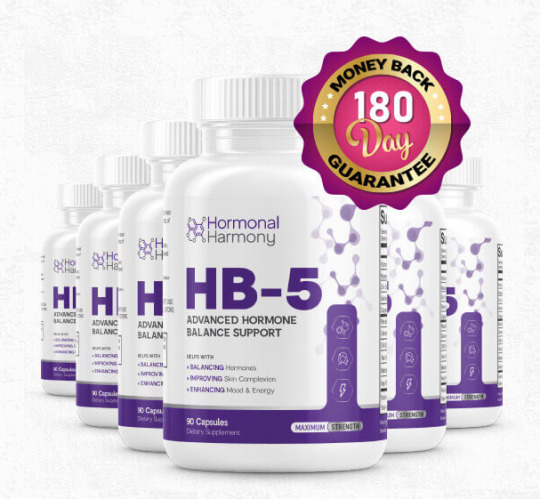
Another Killer Fat Loss Masterpiece Geared Towards Women Dietary supplement - weight loss
With A 30-Second “Snack” That Eliminates Food Cravings & Burns Away 34 Pounds Of Ugly Fat In Record Time!
#Supplements#health#Begouristore#HB5#killerfat#fat#fatloss#fattofit#fatlosshelp#fatlossfood#fatlosstips#fatlosscoach#fatlossprogram#fatlossjourney#FatLossChallenge#fatlossmotivation#fatlosstransformation#dietarysupplement#DietarySupplementProduct#dietarysupplementreviews#dietarysupplementtablets#dietarysupplementsforweightloss#weightloss#weightlosstips#weightlosshelp#weightlossgoals#weightlossdiary#weightlossjourney#weightlosscommunity#weightlossmotivation
0 notes
Text

#fatloss#fatlossjourney#fatlosstips#fasterwaytofatloss#fatlosshelp#fatlosscoach#fatlossgoals#fatlosstransformation#fatlossmotivation#fatlossdiet#fasterwaytofatlosscoach#fatlossfood#fatlossprogram#fatlossmurah#fatlossprogress#fatlossplan#fatlossori#bodyfatloss#fatlossworkout#weightloss_fatlossfast#fatlossfoods#jualfatloss#fatlossmurmer#fatlossasli#pelangsingfatloss#fatlossoriginal#fasterwaytofatlossvip#fatlosschallenge#fatlossrace#fatlosstip
0 notes
Text

Find Out the Top Vegan Weight Loss and Fat Burning Effects of Plant-Based Supplements and Shakes
Are you looking to shed those extra pounds and achieve your weight loss goals? Vegan weight loss supplements and shakes can be a great addition to your journey. Not only do they provide essential nutrients, but they also offer specific fat burn effects that can help accelerate your progress.
1. Increased metabolism: Vegan weight loss supplements and shakes often contain ingredients like green tea extract and cayenne pepper, which can boost your metabolism and help your body burn fat more efficiently.
2. Appetite suppression: Many vegan supplements and shakes are formulated with natural appetite suppressants like glucomannan and garcinia cambogia. These ingredients can help you feel fuller for longer, reducing the urge to snack and overeat.
3. Enhanced energy levels: Vegan weight loss supplements and shakes often contain ingredients like matcha green tea and maca root, which can provide a natural energy boost without the crash associated with caffeine.
4. Thermogenic effects: Certain vegan ingredients, such as capsaicin found in chili peppers, can increase your body’s thermogenesis. This means your body generates more heat, leading to increased calorie burning and fat loss.
What are the Overall Benefits of Taking Vegan Weight Loss Supplements and Shakes?
5. Improved digestion: Many vegan supplements and shakes contain fiber-rich ingredients like flaxseed and chia seeds, which can promote healthy digestion and prevent bloating.
6. Muscle preservation: Vegan weight loss supplements and shakes often contain plant-based protein sources like pea protein and hemp protein. These proteins can help preserve lean muscle mass while promoting fat loss.
7. Detoxification: Some vegan supplements and shakes include ingredients like spirulina and chlorella, which are known for their detoxifying properties. These ingredients can help eliminate toxins from your body, supporting overall health and weight loss.
8. Reduced inflammation: Vegan supplements and shakes often contain anti-inflammatory ingredients like turmeric and ginger. By reducing inflammation in the body, these ingredients can support weight loss efforts.
9. Balanced blood sugar levels: Vegan weight loss supplements and shakes that include ingredients like cinnamon and chromium can help regulate blood sugar levels, reducing cravings and promoting fat burn.
10. Overall health benefits: Vegan weight loss supplements and shakes are typically rich in vitamins, minerals, and antioxidants, which can support overall health and well-being while aiding in weight loss.
Incorporating vegan weight loss supplements and shakes into your routine can provide numerous benefits, from increased metabolism and appetite suppression to improved digestion and detoxification. Remember to consult with a healthcare professional before starting any new supplement regimen. Cheers to your weight loss journey!
#fatloss#fatlossjourney#fatlosstips#FatLossVegan#fatlosshelp#fatlossgoals#fatlosscoach#fatlossmotivation#fatlossfood#fatlossprogram#fatlossprogress#fatlosstransformation#fatlossblog#fatlossinspiration#fatlossplan#fatlossworkout#fatlossmurah#fatlosstraining#fatlossnotweightloss#FatLossFriday#fatlossnerd#fatlossmurmer#fatlossmurahpenekannafsumakan#fatlossjimpnessbeauty#fatlossmurahoriginal#fatlossslimming#fatlossdiet#fatlossprescription#fatlossoriginal#fatlossori
0 notes
Text
youtube
Mini Cuts Explained: Rapid Fat Loss Or Fitness Myth? Are Mini Cuts Worth It? Rapid Fat Loss Or Fitness Myth? #minicut #rapidfatloss #weightlosstips Are mini-cuts actually effective, or are they just another fitness myth? 🤔🔥 In this video, I break down the pros and cons of mini cuts, their impact on metabolism, and whether they’re worth adding to your fat loss strategy. ✨ Bodybuilding-friendly HRT Clinic | Blood Work and GI Mapping w/ Full Analysis & Medical Guidance, TRT, PCT, peptides, weight loss, hair loss treatment, sexual wellness, age management, etc: https://ift.tt/oM0U3F6 ✨ Apply for Coaching: https://ift.tt/G2CnOpu You'll learn: ✅ What a mini cut is and how it works ✅ The science behind rapid fat loss and metabolic adaptation ✅ Who should use mini cuts and when they're NOT ideal ✅ How to structure a mini cut for maximum results 📈 BEST RESOURCES Amazon Favorites: https://ift.tt/mXy7Fg1 My Preferred Peptides: https://ift.tt/KvzQiDu Morphogen Nutrition: https://ift.tt/pT0fQ91 Use discount code “David10” on your order! Prevent Hair Loss with Intelligent Elephant: https://ift.tt/EI8HzWY If you're into bodybuilding, weight loss, or fitness, you NEED to watch this before trying a mini-cut! 🚀💪 ✅ Important Links 🔗 Intelligent Hair Products Mentioned (code David): https://ift.tt/EI8HzWY 🔗 Linktree: https://ift.tt/opNjZR8 🔔Subscribe for Expert Tips on Muscle Building, Nutrition, and Creating Your Dream Life. https://www.youtube.com/channel/UCxjheFb2GYN1iHdPgFjzwCQ/?sub_confirmation=1 Stay Connected With Me. Instagram: https://ift.tt/boH4u1D Tiktok: https://ift.tt/8R6SUuT Discord: https://ift.tt/paAfSCo Website: https://ift.tt/QuNR4vC 📩 For inquiries: [email protected] ============================= ✅ Recommended Playlists: ▶️ https://www.youtube.com/@DavidDeMesquita/playlists 🎬Suggested videos for you: ▶️ https://www.youtube.com/watch?v=ysrdLwYP0Gw ▶️ https://www.youtube.com/watch?v=ppLcTf9Q2BU ▶️ https://www.youtube.com/watch?v=bRSdLutyPzE ▶️ https://www.youtube.com/watch?v=lmoAsESfOV4 ▶️ https://www.youtube.com/watch?v=jo5s8kadaY8 ================================= 🔎 Related Phrases: Mini Cut, Mini Cut Bodybuilding, Are Mini Cuts Worth It, Rapid Fat Loss, Best Way To Lose Fat, Cutting Phase Bodybuilding, Weight Loss Tips, Fat Loss Strategies, Best Cutting Diet, Mini Cut Transformation, Cutting Phase Workout, Muscle Retention While Cutting, Calorie Deficit Weight Loss, How To Do A Mini Cut, Aggressive Mini Cuts, Metabolism Boost For Fat Loss, Diet For Cutting Phase #minicut #rapidfatloss #weightlosstips #fatlosstransformation #fitness #bodybuilding #shredding #cuttingdiet #fitnessmotivation #nutrition #fitnessscience #weightlossjourney #fatlosscoach #fitnesscoach #metabolismboost Chapters 00:00 Introduction 00:14 What is Metabolism 01:10 What are three types of diets 01:50 How long can I stay in a mini cut 02:08 What is the risk of crash dieting 03:17 How lean body mass impacts cardio type 05:18 Cons of a mini cut 07:04 Should bodybuilders do mini cuts 07:31 Muscle lost during a mini cut via David DeMesquita https://www.youtube.com/channel/UCxjheFb2GYN1iHdPgFjzwCQ January 26, 2025 at 11:00PM
#bodybuilding#fitnessjourney#mentalhealth#inspiration#musclebuilding#fitnessoptimization#healthandwellness#podcasts#Youtube
0 notes
Text

Paneer vs Fish ✅
➡️ Paneer 100 Gram
• Calories - 300.5kcal
• Protein - 19.3g
• Fats - 24.1g
• Carbs - 1.6g
➡️ Fish 100 Gram
• Calories - 138kcal
• Protein - 23.1g
• Fats - 5.0g
• Carbs - 0g
********************************
Body Transformation Plan - DM
Visit - Dietsart.com
Contact - ☎️ +91 8487849749 [ WhatsApp ]
1/3/6 Months Plan Available
*********************************
• Daily Updates ✅
• Weekly Calls ✅
• Weekly Diet Changes ✅
• 24/7 WhatsApp Availability ✅
• Home-Based Food Plan ✅
• Supplement Guidance ✅
• Gym/Home Exercise Plan ✅
• Android/IOS App Assistance ✅
**********************************
#yogendersingh #dietsart #weightlosstransformation #fatlosscoach #nutritionist #trending #viral #fitnesscoach #healthyindia #fitindia #fish #paneer #fitnessexpert
0 notes
Photo

Larissa is pushing her limits! And that's the way it is - you know good things never come from comfort zones! I am glad to be a part of her Fitness Journey and I wish all her goals and dreams come true! Thank you to her and all my clients for the friendship’s we made while making our dreams come true! . #fatloss #fatlossjourney #fatlosstips #fatlosscoach #losefatgainmuscle #fit #startyourjourneytoday #loseyourfirst30lb #trainsmart #healthytransformation #bodyrecomp #disciplined #losefat #transformation #womenfatloss #Womenfatlosscoach #mealtiming #Beleiveinyourself #friendship https://www.instagram.com/p/Cbs3ArVugvP/?utm_medium=tumblr
#fatloss#fatlossjourney#fatlosstips#fatlosscoach#losefatgainmuscle#fit#startyourjourneytoday#loseyourfirst30lb#trainsmart#healthytransformation#bodyrecomp#disciplined#losefat#transformation#womenfatloss#womenfatlosscoach#mealtiming#beleiveinyourself#friendship
2 notes
·
View notes
Text

𝐅𝐨𝐨𝐝 𝐒𝐰𝐚𝐩𝐬 𝐓𝐡𝐚𝐭 𝐂𝐮𝐭 𝐓𝐡𝐨𝐮𝐬𝐚𝐧𝐝𝐬 𝐨𝐟 𝐂𝐚𝐥𝐨𝐫𝐢𝐞𝐬!! 𝗪𝗵𝗲𝗻 𝗶𝘁 𝗰𝗼𝗺𝗲𝘀 𝘁𝗼 𝗱𝗶𝗲𝘁𝗶𝗻𝗴, 𝗿𝘂𝗹𝗲𝘀 𝗰𝗮𝗻 𝗴𝗲𝘁 𝗿𝗲𝗮𝗹𝗹𝘆 𝗳𝗿𝘂𝘀𝘁𝗿𝗮𝘁𝗶𝗻𝗴 Everything you crave is everything you can't eat. But that's not the way it should be. We've found a way you can eat what you want, when you want it. 𝗖𝗵𝗲𝗲𝘀𝗲𝗯𝘂𝗿𝗴𝗲𝗿𝘀, 𝗶𝗰𝗲 𝗰𝗿𝗲𝗮𝗺, 𝗮𝗻𝗱 𝗲𝘃𝗲𝗻 𝗽𝗮𝗻𝗶𝗻𝗶𝘀? Yes, even those. To do that, all you have to do is implement 𝐬𝐦𝐚𝐫𝐭 𝐟𝐨𝐨𝐝 𝐬𝐰𝐚𝐩𝐬 To help you lose weight, we compiled simple swaps that slash your calorie intake significantly. If you made all of these in one week (of course, a lofty goal), 𝐲𝐨𝐮 𝐰𝐨𝐮𝐥𝐝 𝐬𝐚𝐯𝐞 𝐨𝐯𝐞𝐫 𝟒,𝟗𝟔𝟎 𝐜𝐚𝐥𝐨𝐫𝐢𝐞𝐬
#calories#weightlossgoals#weightlosstips#weightloss#eating diary#healthy eating#fitness#health & fitness#healthyfood#foods#fatlosscoach#fatfree#health#fashion
3 notes
·
View notes
Photo
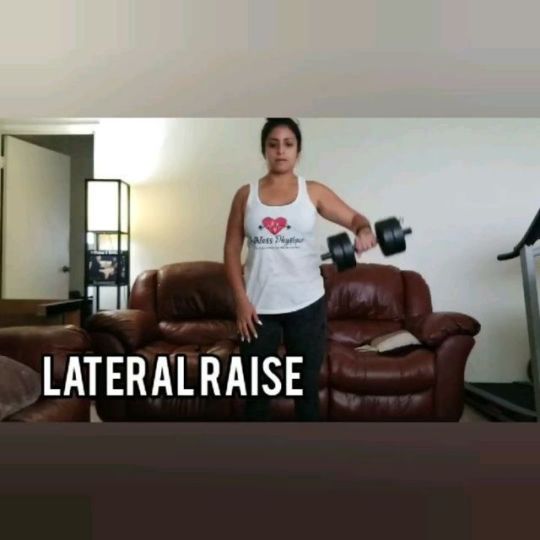
💪🏽SHOULDERS AND LEGS AT HOME💪🏽 What you need: dumbbells Shoulders: Front Raise - 3x12 Lateral Raise - 3x12 Legs: Goblet Squat - 3x12 DB Sumo deadlift - 3x12 Lifting at least 2x a week is beneficial for your fat loss. If you're wondering why you may not be losing fat in your belly, arms or back lifting will solve that for you. Set 2 times in your week to start lifting weights girl! #upperbodyexercise #homeworkoutswork #homeworkoutsrock #homeexercises #prilaga #armday #legdayworkout #flexfriday💪 #armdayworkout #homeworkoutsforyou #fatlosscoaches #armdayworkouts #homeworkoutplan #fatlosscoach #flexfriday #homeworkouts #homeworkouts_4u #fatlosscoachforwomen #upperbodyexercises #homeworkoutvideos #fatlosscoaching #homeworkoutideas #homeexercisestoloseweight #legdaytoday #legday🍑 #flexfridays💪😎 #flexfridays #fatlosscoachingonline #homeworkoutvideo #legdaygains #legdaybestday https://www.instagram.com/p/Bys4Ah-pFR3/?igshid=1nd5uhe9kh7be
#upperbodyexercise#homeworkoutswork#homeworkoutsrock#homeexercises#prilaga#armday#legdayworkout#flexfriday💪#armdayworkout#homeworkoutsforyou#fatlosscoaches#armdayworkouts#homeworkoutplan#fatlosscoach#flexfriday#homeworkouts#homeworkouts_4u#fatlosscoachforwomen#upperbodyexercises#homeworkoutvideos#fatlosscoaching#homeworkoutideas#homeexercisestoloseweight#legdaytoday#legday🍑#flexfridays💪😎#flexfridays#fatlosscoachingonline#homeworkoutvideo#legdaygains
0 notes
Text
Pretty Awesome transformation right? What do you think 🤔 . Thanks to kaylee.black, follow her on tiktok .
#transformation#weightloss#weightlossideas#weightlossroutines#weightlossstruggle#fatlosstips#gettingleaner#fatlossprogress#fatlossprogram#howtolosefat#fatlosscoach#fatlossplan#fatlossmotivation#losefat#diettips#losingweight#fatburning#fatburn
3 notes
·
View notes
Photo

🔥 THE 12 BEST EXERCISES FOR RAPID FAT LOSS🔥 . . . . . . . . 🍵 Rapid fat loss protocols have a time & place within a well designed nutrition plan. I use them sporadically with various online coaching clients depending on their relationship with food (I won't do it with anyone with disordered eating habits) as well as their current goals. - 🐣HOWEVER, each and every client who begins a rapid fat loss protocol with me knows they are NOT the end-all-be-all. They are not a quick fix. And once it's finished you will need to switch to something more sustainable so you can continue making progress and maintain your weight loss long-term. - 🏓The point of this post is not to defend rapid fat loss protocols. Whether it's to highlight the importance of understanding *real progress takes a ton of time and effort*. - 🦄There is no 21 day fix. There is no pill or potion that'll burn fat and keep it off for life. There is no fast track to success. -only body contouring by 😉 @Flabulesswellness_studio_arl 🐸This whole \"fitness thing\" is a life long process. No matter how lean or strong or defined you get...there's always room to improve. There's always more to learn. And there's always ways to get better. - 🦋People run into issues when they think, \"I'll be happy when...\" or \"I'll love myself when...\" - 🐥No. That's not how this works. If you don't love who you are right now, you aren't gonna love who you are when you have a 6-pack. - 🐛Strap in. Buckle up. Hop on your Thundercat and enjoy the ride because once you begin, you're in it for life. Might as well prepare for the long haul and have fun along the way. Because, when you really think about it...if you aren't having fun, what's the point? - 🙏🏾❤I hope this hits home with you and, as always, any questions leave em below 💪🏾 - #fatloss #fatlosstips #fatlossfood #fatlosshelp #fatlosscoach #fatlossplan #fatlossmotivation #weightlosshelp #weightlosstips #weightlosstips #weightlossmotivation #starknakednutrition #weightlosscoach #caloriecounting #calories #fitness #fitnessaddict #workoutaddict #fitnessforlife https://www.instagram.com/p/CS98AOgHDK8/?utm_medium=tumblr
#fatloss#fatlosstips#fatlossfood#fatlosshelp#fatlosscoach#fatlossplan#fatlossmotivation#weightlosshelp#weightlosstips#weightlossmotivation#starknakednutrition#weightlosscoach#caloriecounting#calories#fitness#fitnessaddict#workoutaddict#fitnessforlife
3 notes
·
View notes
Text
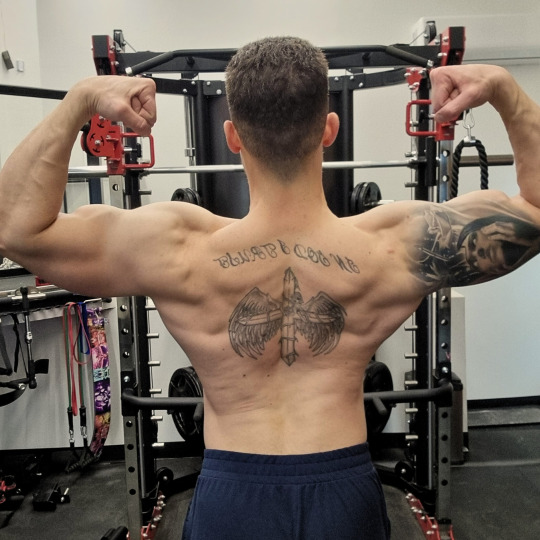
Bone Health: The Hidden Benefits of Weightlifting for Stronger Bones
When we contemplate weightlifting, our minds often conjure images of bulging muscles and impressive strength gains. However, there's a facet of weightlifting that frequently escapes our attention – its profound influence on bone health. In this article, we shall embark on a journey to uncover the concealed advantages of weightlifting for enhancing bone strength. We'll provide answers to pivotal questions and delve into the intricate connection between weightlifting and the health of our bones.
Does Lifting Weights Strengthen Your Bones?
Weightlifting isn't solely about sculpting muscle and achieving physical strength; it also plays a pivotal role in fortifying your bones. The process behind this phenomenon is both fascinating and crucial for understanding the benefits of weightlifting.
When you engage in weightlifting, you subject your bones to a unique kind of stress. This stress isn't detrimental but rather an essential component of the process. As your muscles contract and exert force against resistance, your bones must adapt to this increased stress. In response, the bone-forming cells, known as osteoblasts, become more active. These diligent workers within your body's framework start to create new bone tissue, thus enhancing bone density.
Bone density is a critical factor in bone health, as it determines the strength and resilience of your bones. Higher bone density means that your bones are less likely to break or fracture, making them better equipped to endure the test of time. This adaptation to stress and increased bone density is one of the most significant and often overlooked benefits of weightlifting.
Regularly engaging in weightlifting exercises, such as squats, deadlifts, or bench presses, is like sending a signal to your bones that they need to become stronger to meet the demands of your workouts. This adaptive response results in denser, more robust bones, safeguarding your overall bone health. So, if you've ever wondered if lifting weights could genuinely make your bones stronger, the answer is a resounding yes. It's not just about gaining muscle; it's about investing in the long-term health and resilience of your skeletal structure.
Can Weight Lifting Reverse Osteoporosis?
Osteoporosis, a term that often conjures images of fragile bones and the elderly, is indeed a concerning condition. It is characterized by a reduction in bone density, which renders bones more susceptible to fractures. While it's true that osteoporosis is commonly associated with the natural aging process, it's not a foregone conclusion that we have to accept weakened bones as an inevitable part of growing older. Weightlifting, among other strategies, emerges as a powerful tool in managing and, in some cases, reversing the effects of osteoporosis.
The key to understanding how weightlifting can combat osteoporosis lies in its unique ability to stimulate bone growth and increase bone density. As mentioned earlier, weightlifting exercises stress our bones in a controlled and progressive manner. This stress is precisely what prompts the body to bolster bone density. The increased stress from lifting weights effectively tells the body, "Our bones need to be stronger to withstand this."
Osteoporosis is characterized by a loss of bone density, which makes bones brittle and more prone to fractures. By engaging in weightlifting, individuals with osteoporosis can work to reverse this decline in bone density. Over time, with consistent weightlifting, bone-forming cells, known as osteoblasts, become more active, generating new bone tissue. This process leads to improved bone density and, consequently, stronger bones.
However, it's essential to approach weightlifting with caution if you have osteoporosis. Consulting a healthcare professional is crucial before embarking on a weightlifting regimen. They can assess your individual condition, provide guidance on the types and intensity of exercises that are safe for you, and ensure that you're taking necessary precautions to prevent injuries. Weightlifting can indeed be a powerful ally in the battle against osteoporosis, but it's not a one-size-fits-all solution.
In summary, the answer to whether weight lifting can reverse osteoporosis is a resounding yes, provided it's done with proper guidance and precautions. Weightlifting has the potential to boost bone density, making bones less susceptible to fractures. It's a testament to the adaptability and resilience of our bodies, even in the face of challenging conditions like osteoporosis. With the right approach, weightlifting can be a transformative tool in regaining bone strength and overall health.
What Is the Best Exercise to Increase Bone Density?
The quest for increased bone density often leads us to ponder which exercises can deliver the most significant benefits. While numerous activities can contribute to better bone health, weightlifting stands out as one of the most effective approaches. However, within the realm of weightlifting, certain exercises have proven to be particularly potent in promoting bone density.
When we speak of the best exercises to enhance bone density, it's impossible to overlook the triumvirate of weightlifting movements: squats, deadlifts, and bench presses. These exercises are not only fundamental to any weightlifting routine but also shine as bone-strengthening powerhouses.
Squats: Squats are renowned for their comprehensive impact on the body, working multiple muscle groups, including the quadriceps, hamstrings, glutes, and lower back. They also place a substantial load on the bones of the lower body. When you squat, your leg bones bear a considerable amount of weight, and this stress triggers the creation of new bone tissue, increasing bone density. Squats are like a one-stop shop for building muscle and bones.
Deadlifts: Deadlifts are another formidable exercise for enhancing bone density. They primarily target the muscles in your lower back, glutes, hamstrings, and the entire posterior chain. The act of lifting a heavy barbell from the ground places significant stress on your spine, hip, and leg bones. This stress stimulates bone-forming cells, fortifying your bones over time.
Bench Presses: While bench presses predominantly focus on the muscles of the chest, shoulders, and triceps, they also require engagement of the bones in the upper body. Your shoulder blades, collarbones, and ribs are essential for stabilizing your upper body during this exercise. Over time, the bones in your upper body adapt to this stress by becoming denser.
The reason these exercises are particularly effective for increasing bone density is their ability to place substantial stress on the bones. This stress serves as a stimulus for the body to reinforce bone density. It's a remarkable example of how our bodies adapt to meet the demands we place upon them.
To maximize the bone-strengthening benefits, it's crucial to incorporate these exercises into your weightlifting routine. While these exercises might seem challenging at first, their long-term benefits for bone health are undeniable. As with any exercise program, it's advisable to start with appropriate weights, maintain proper form, and progress gradually to reduce the risk of injury. When it comes to enhancing bone density, these compound exercises are truly among the best options available.
Does Lifting Increase Bone Thickness?
Indeed, lifting weights can have a remarkable impact on increasing bone thickness. To understand this phenomenon, let's delve into the fascinating science behind how lifting heavier weights can result in thicker, denser bones.
When you engage in weightlifting and progressively increase the amount of weight you lift, you subject your bones to more significant stress. This stress on your bones is a critical part of the process and serves as the impetus for bone adaptation. In response to this stress, the body initiates a remarkable sequence of events.
1. Osteoblast Activation: As you lift heavier weights, bone-forming cells called osteoblasts become more active. These diligent cells play a pivotal role in building new bone tissue.
2. Bone Remodeling: The increased stress on the bones sets in motion a process known as bone remodeling. In this process, the body starts breaking down older bone tissue and replacing it with fresh, denser bone. This is akin to a natural upgrade for your bones.
3. Increased Bone Thickness: Over time, the cumulative effect of these adaptations results in thicker bones. The new bone tissue is denser and more robust, contributing to enhanced bone thickness.
This increased bone thickness is vital for bone health and overall strength. Thicker bones are better equipped to withstand various stressors and forces placed upon them, reducing the risk of fractures and other bone-related issues.
While weightlifting's primary objective may be to build muscle strength and definition, it's a remarkable side effect that it also bolsters bone thickness. This interplay between muscle development and bone adaptation highlights the intricate balance of our musculoskeletal system.
It's important to note that, to achieve these bone-thickening benefits safely and effectively, it's crucial to approach weightlifting with proper form and gradual progression. Starting with weights that are suitable for your current level of strength and steadily increasing the load will help prevent injuries while promoting bone health.
The Heaviest Weight Lifted and Its Impact on Bone Health
One of the key tenets of weightlifting and its profound impact on bone health is the notion of challenging oneself by lifting the heaviest weight possible. This concept, known as "progressive overload," is not just about building impressive muscles; it also plays a pivotal role in enhancing bone strength.
The connection between lifting heavy weights and bone health is intrinsically linked to the body's remarkable ability to adapt to increased stress. When you lift weights, especially heavier ones, your bones are subjected to a more substantial load. This is where the magic happens. As the skeletal system perceives this heightened stress, it responds by initiating a series of adaptive processes.
1. Bone Density: The first and most crucial response is an increase in bone density. This means that the bone tissue becomes denser, and in turn, stronger. This is achieved through the stimulation of bone-forming cells called osteoblasts. These cells become more active, contributing to the creation of new, denser bone material.
2. Bone Remodeling: In addition to enhancing bone density, lifting the heaviest weights also triggers a process known as bone remodeling. This is where the body essentially renovates its bones. Older bone tissue is broken down and replaced with fresh, robust bone material. This is the body's way of ensuring that your bones can meet the increased demands placed upon them.
The impact of lifting the heaviest weights isn't just superficial; it extends to the very core of your bone structure. This profound change leads to stronger bones that are more resilient to the challenges of daily life. It reduces the likelihood of fractures and other bone-related issues, making it a crucial component of overall bone health.
As mentioned earlier, the principle of progressive overload is integral to reaping the bone-strengthening benefits of weightlifting. This means that as your strength improves, you should continuously strive to lift heavier weights. By consistently pushing your limits and gradually increasing the load, you ensure that your bones continue to adapt and become denser over time.
So, the next time you're contemplating whether to challenge yourself with the heaviest weight you can handle, remember that you're not just building muscle – you're investing in the long-term health and resilience of your bones. It's a powerful reminder of the interconnectedness of our musculoskeletal system and the incredible adaptability of our bodies.
How to Strengthen Bones Naturally
While weightlifting undeniably plays a crucial role in enhancing bone strength, it's not the sole path to achieving robust bones. There are various other natural methods that can complement your efforts and contribute to overall bone health.
Dietary Choices: Proper nutrition is fundamental to bone health. Calcium and vitamin D are two essential components. Calcium provides the building blocks for bone density, while vitamin D helps in its absorption. Ensure your diet includes calcium-rich foods like dairy products, leafy greens, and fortified foods. Additionally, consider vitamin D sources such as fatty fish, eggs, and sunlight exposure. If your diet doesn't meet these requirements, supplements can fill the gap.
Physical Activity: Beyond weightlifting, regular physical activity is essential for bone health. Weight-bearing exercises, such as walking, jogging, and dancing, stimulate bone formation. They encourage the body to maintain and increase bone density, helping to keep bones strong and resilient.
Healthy Body Weight: Maintaining a healthy body weight is another critical factor. Excess weight can strain your bones, particularly those in the lower body, making them more susceptible to damage. On the other hand, being underweight can weaken bones. Strive for a balanced weight that supports your overall health and well-being.
Lifestyle Choices: Certain lifestyle habits can significantly impact bone health. Smoking, for instance, is associated with reduced bone density and an increased risk of fractures. Excessive alcohol consumption can also harm bones. Moderation is key when it comes to these habits. Reducing or quitting smoking and limiting alcohol intake can promote better bone health.
Adequate Sleep: Quality sleep is essential for overall health, and it also plays a role in bone health. During deep sleep, the body repairs and rebuilds bone and tissue. Prioritizing a regular sleep schedule and aiming for 7-9 hours of restful sleep each night can support your body's natural bone maintenance processes.
Regular Check-Ups: Finally, regular check-ups with your healthcare provider are essential. They can assess your bone health, identify any deficiencies or concerns, and recommend appropriate interventions or treatments, if necessary. Early detection and proactive management are critical for maintaining bone health.
Incorporating these natural approaches alongside weightlifting into your lifestyle can help create a comprehensive strategy for strengthening your bones. It's important to recognize that bone health is a holistic endeavor, and these practices collectively contribute to your overall well-being. By making informed choices and adopting these habits, you can enjoy the benefits of strong and resilient bones for years to come.
The Relationship Between Exercise, Physical Activity, and Bone Strength
The intricate dance between exercise, physical activity, and bone strength is a compelling tale of how our bodies adapt to the demands we place upon them. It's a story that underscores the profound impact of movement on our skeletal system and the importance of a well-rounded approach to bone health.
Exercise, particularly weightlifting, stands as a potent catalyst for bone strength. The act of lifting weights places stress on our bones, prompting them to become denser and more robust. This increase in bone density is a hallmark of stronger bones and reduced susceptibility to fractures. Weightlifting, with its focus on resistance and progressive overload, is a powerful ally in the quest for enhanced bone health.
But the story doesn't end with weightlifting alone. Weight-bearing exercises like walking and running also play a pivotal role in maintaining bone health. These activities, characterized by the impact and force they generate as we move, stimulate the body to continually invest in bone density. The bones adapt to meet the demands of these weight-bearing exercises by becoming denser and more resilient.
Staying physically active is an essential part of the equation for bone health. It's not just about the specific type of exercise but the consistent engagement in physical activities that require your bones to work. Whether it's a brisk walk in the park, a jog around the neighborhood, or a session of weightlifting at the gym, these activities contribute to maintaining bone density and overall bone strength.
Diversity in exercise is also a key theme in the tale of bone strength. Incorporating a variety of exercises into your routine ensures that different muscle groups and bones are engaged. This holistic approach ensures a comprehensive strengthening of your skeletal system.
The relationship between exercise, physical activity, and bone strength is not merely a one-way street. It's a dynamic and reciprocal connection. As you exercise, your bones become stronger, reducing the risk of fractures and other bone-related issues. In return, strong bones allow you to engage in physical activities with confidence, reinforcing your overall health and well-being.
In conclusion, the narrative of exercise and bone strength is a story of resilience and adaptability. Weightlifting and weight-bearing exercises are protagonists in this tale, with their ability to stimulate bone density. But it's also a story of balance, where diversity in exercise and consistent physical activity play essential supporting roles. By actively participating in this narrative, you're not only writing a healthier future for your bones but also embracing a more vibrant and active lifestyle.
Weight Management for Better Bone Health
Maintaining a healthy weight is not only vital for overall well-being but also plays a significant role in preserving bone health. Our weight impacts the stress that our bones endure and how well they can support our bodies. It's a pivotal piece of the puzzle in the quest for strong and resilient bones.
Excess body fat can place undue stress on your bones, particularly the weight-bearing bones like those in the legs and spine. This increased mechanical load can lead to various musculoskeletal issues and compromise bone health. It's akin to the bones carrying a heavier burden than they are naturally equipped for, and over time, this can lead to damage and reduced bone density.
One of the effective strategies for weight management and promoting better bone health is weightlifting. Weightlifting not only contributes to building muscle but also aids in weight control. Muscle is metabolically active tissue, which means it burns calories even when you're at rest. The more muscle you have, the more efficient your body is at burning calories. This can assist in weight management and reduce excess body fat, subsequently alleviating the strain on your bones.
Additionally, a balanced diet is an essential companion to weightlifting in the pursuit of weight management. Proper nutrition ensures that you're providing your body with the necessary nutrients for muscle development and maintenance while managing your calorie intake effectively.
When you maintain a healthy weight through a combination of weightlifting and balanced nutrition, you reduce the mechanical load on your bones, allowing them to function optimally. Your bones are then better equipped to support your body's weight without succumbing to excessive stress. This, in turn, supports better bone health and reduces the risk of bone-related issues.
In conclusion, weight management is a key player in the symphony of bone health. It's not just about aesthetics or the number on the scale; it's about the long-term well-being of your bones. Weightlifting, coupled with a balanced diet, can be your allies in this journey. By maintaining a healthy weight, you are not only enhancing your bone health but also embracing a healthier and more active lifestyle.
Boosting Energy Levels with Weightlifting
The benefits of weightlifting extend far beyond the realm of muscle and bone. One of the remarkable side effects of this physical activity is its capacity to infuse you with newfound energy. The relationship between weightlifting, energy levels, and overall vitality is an intriguing journey into the world of fitness and well-being.
Regular physical activity, weightlifting included, is a dynamic catalyst for improved energy levels. Engaging in weightlifting sessions not only strengthens your muscles and bones but also has a profound impact on your cardiovascular health. As you lift weights, your heart rate increases, pumping oxygen-rich blood to various parts of your body, including your brain and muscles. This enhanced blood flow serves as a natural energy booster.
But the benefits don't stop there. Weightlifting enhances your overall physical fitness and endurance. It helps you build stamina and resilience, making everyday activities feel less taxing. With increased energy, you're more likely to stay active, both inside and outside the gym. This is a virtuous cycle. The more active you are, the more energy you have, and the more energy you have, the more active you want to be.
Weightlifting also contributes to mental clarity and a sense of well-being. The release of endorphins, often referred to as "feel-good" hormones, during and after a workout can elevate your mood and reduce stress. When you feel better mentally, it's easier to stay active and maintain a positive outlook on your fitness journey.
This enhanced energy has a significant impact on your bone health. When you have more energy, you're more inclined to engage in weightlifting and other physical activities. Consistency is a key factor in reaping the benefits of weightlifting for your bones. The more you can integrate weightlifting into your routine, the more robust and resilient your bones become.
In summary, the relationship between weightlifting, energy levels, and bone health is an interconnected web of physical and mental well-being. Weightlifting not only strengthens your bones but also boosts your overall vitality. It enhances your cardiovascular health, elevates your energy levels, and fuels a cycle of continuous activity. As you embark on your journey to better bone health through weightlifting, you're not only investing in your skeletal strength but also in a more energetic and vibrant life.
Muscle Strength and Its Connection to Bone Health
The intricate relationship between muscle strength and bone health is a testament to the synergy of our body's structural components. These two elements are deeply interlinked, and weightlifting is the bridge that connects them, fortifying the partnership between muscles and bones.
Weightlifting is a powerful catalyst for muscle growth. As you engage in weightlifting exercises, your muscles respond to the resistance by becoming stronger and more developed. This increased muscle mass is not only aesthetically pleasing but also plays a pivotal role in supporting your bones.
The forces exerted on your bones during weightlifting are significant. The act of lifting weights places a unique form of stress on your bones, different from what they experience during weight-bearing activities. This mechanical load stimulates your bones to adapt and become denser. As a result, your bones gain in density and strength, which is a hallmark of robust bone health.
But the connection goes even deeper. Strong muscles act as natural protectors for your bones. They provide an additional layer of defense, shielding your skeletal structure from external forces and potential injuries. When your muscles are well-developed and powerful, they contribute to enhanced balance and stability.
This balance and stability are critical in reducing the risk of falls and fractures, particularly in older adults. A robust musculoskeletal system, where muscles and bones work in harmony, can prevent accidents and enhance the overall quality of life.
In essence, the connection between muscle strength and bone health is like a symbiotic relationship. Weightlifting is the instrument that strengthens both components, creating a harmonious partnership. As you work to build muscle strength, you're also promoting bone density and, in turn, overall bone health.
Shedding Body Fat and Aiding Weight Loss
Weightlifting is often associated with bulking up, but it's also an excellent tool for shedding body fat and aiding weight loss. The connection between weightlifting, metabolism, and the reduction of excess body fat is a fascinating journey into the world of fitness and health.
As you engage in weightlifting, your body undergoes a transformation. You're not only building muscle but also supercharging your metabolism. Muscle is a metabolically active tissue, which means it requires energy (calories) to maintain itself. The more muscle you have, the higher your resting metabolic rate becomes. This means that even when you're not actively working out, your body is burning more calories.
This metabolic boost is a game-changer when it comes to weight loss. The additional calories your body consumes to maintain muscle mass create a calorie deficit, which is essential for shedding excess body fat. Weightlifting, therefore, contributes to both weight loss and the reduction of body fat.
The impact on your bone health is two-fold. Firstly, weight loss has a positive effect on your bones. Excess body weight places undue stress on your bones, especially those that bear the brunt of your weight, like those in your legs and spine. Shedding body fat reduces this mechanical load, relieving the strain on your bones.
Secondly, weightlifting, with its focus on resistance and progressive overload, complements the weight loss journey. It helps you sculpt your body, replacing fat with lean muscle. The denser your muscles become, the better they support your skeletal system. This, in turn, strengthens your bones and reduces the risk of bone-related issues.
Conclusion
Incorporating weightlifting into your fitness routine offers not only visible muscle gains but also hidden benefits for your bone health. It can increase bone density, reverse osteoporosis, and promote stronger, thicker bones. Remember to consult with a healthcare professional before starting any new exercise regimen, and always prioritize proper form and safety in your weightlifting practice. Your bones will thank you for it.
#atozbodyfitness#fatlosscoach#fatlosshelp#fitfam#muscle gain#weightlifting#how to build muscle#muscle gains#losebellyfat#muscle#Bone Health: The Hidden Benefits of Weightlifting for Stronger Bones#Does lifting weights strengthen your bones?#Can weight lifting reverse osteoporosis?#What is the best exercise to increase bone density?#Does lifting increase bone thickness?
3 notes
·
View notes
Photo
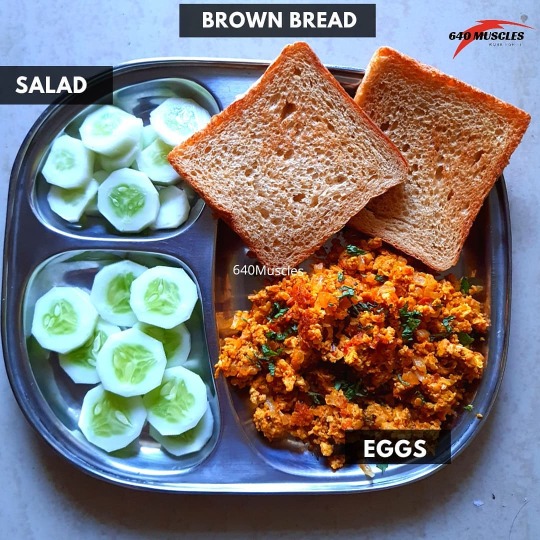
#mealideas Egg bhurji + brown bread + salad . . . #640muscle #640muscles #fatlosstips #fatlosscoach #fatlossjourney #diettips #dietcoach #healthymealideas #healthymealprep #itslifestylenotdiet #recipesforkids #kidsnutrition #weightlossroutines #fitnessmealideas #eggsforlunch #eggbhurji #eggsrecipe #foodforfoodie #punehealthyfoodies #punemint #myfatlossjourney #onlinefitnesscoaching #punefit #punehealthyfood #punehealthyfoodies #punehealth #punewomen (at Pune, Maharashtra) https://www.instagram.com/p/CSN3VCXqTre/?utm_medium=tumblr
#mealideas#640muscle#640muscles#fatlosstips#fatlosscoach#fatlossjourney#diettips#dietcoach#healthymealideas#healthymealprep#itslifestylenotdiet#recipesforkids#kidsnutrition#weightlossroutines#fitnessmealideas#eggsforlunch#eggbhurji#eggsrecipe#foodforfoodie#punehealthyfoodies#punemint#myfatlossjourney#onlinefitnesscoaching#punefit#punehealthyfood#punehealth#punewomen
1 note
·
View note
Photo

. . . . . #caloriedeficit #diet #exercise #fatloss #fatlosscoach #fatlossjourney #fatlossmotivation #fatlosstips #fitnessmotivation #food #goals #health #healthy #healthyeating #healthyfood #healthylifestyle #healthyliving #instagood #lifestyle #love #motivation #nutrition #personaltrainer #slimmingworld #transformation #weightloss #weightlossjourney #weightlossmotivation #weightlosstransformation #workout (at London, Unιted Kingdom) https://www.instagram.com/p/CRiKK9YpUpo/?utm_medium=tumblr
#caloriedeficit#diet#exercise#fatloss#fatlosscoach#fatlossjourney#fatlossmotivation#fatlosstips#fitnessmotivation#food#goals#health#healthy#healthyeating#healthyfood#healthylifestyle#healthyliving#instagood#lifestyle#love#motivation#nutrition#personaltrainer#slimmingworld#transformation#weightloss#weightlossjourney#weightlossmotivation#weightlosstransformation#workout
1 note
·
View note
Photo

Banyak orang yang bilang ke saya kalau dia belum bisa konsisten mengikuti program Fat Loss yang saya rancang untuk dia dengan alasan dia belum konsisten atau belum siap untuk diaturkan pola makannya. Kalau sudah konsisten, pastinya dia sudah langsing ya.. 🙄 Justru karena tidak konsiten itulah, harus belajar bagaimana caranya konsisten.. Pilih mana, diaturkan pola makan sekarang oleh saya dalam kondisi sehat ataukah tunggu dokter aturkan pola makan dalam kondisi sambil di-infus ❓ #CoachJimmy #OnlineCoachJimmy #pelatihonline #digitalmarketer #fatloss #fatlosscoach #spesialislangsing #onlinementor #onlinemarketing #kesehatan #sehat #polamakan #langsing #konsisten https://www.instagram.com/p/CPVRROABkoP/?utm_medium=tumblr
#coachjimmy#onlinecoachjimmy#pelatihonline#digitalmarketer#fatloss#fatlosscoach#spesialislangsing#onlinementor#onlinemarketing#kesehatan#sehat#polamakan#langsing#konsisten
1 note
·
View note
Photo

Weight Loss & TDEE (Total Daily Energy Expenditure) A lot of people are missing out on the TDEE. It is a problem because you are creating a calorie deficit with your hard work. Including your hard training and Diet- Then on a “lazy day” you CAN come out from the calorie deficit accidentally. 😅Happens easily with anybody - especially if you are in a slight deficit… ⚠️The biggest problem is -most likely you do not even recognise it. 💡So try to keep an average, steady activity level every day to secure your long term Fat Loss success! I had the same issue, until now… In my training and working days I burn 1000 “active” calories. But when I am working from home I barely burn 2-300 Active Energy. That is a HUGE difference! So I got this little indoor bike here -you see in the pictures, 😇Help me to keep an average activity during “Office workdays” 💁♀️It is a lot of ways for you to BUILT IN your daily schedule a little bit of Activity (aside of exercising) Like: Take a nice walk with your loved ones, Or help with the house chores, You can walk your puppy (if you have one), Weekend Shopping day, Go out hiking or biking trips with friends … Endless opportunities. (: I chose the indoor bike for winter, simply because it is helps me to stay productive and I hate cold.😂 💁♀️You are looking for something that you like to do and fit in your lifestyle! 💡Look at your situation, find your gap -When you see clearly the problematic area -the solution will come to your mind easily! Good Luck & Stay Active ! 📲DM me ‘Burst’ if you are ready for your transformation ! #fitnesscoach #fitnessjourney #gymlife #fatloss #fatlossjourney #fatlosstips #fatlosscoach #losefatgainmuscle #fitness #fitnessmotivation #lifestyle #bodytransformation #coaching #fit #startyourjourneytoday #loseyourfirst30lb #trainsmart #healthytransformation #bodyrecomp #disciplined #loseweighttip #losefat #starttodayjournal #transformation #loseweightfast #womenfatloss #Womenfatlosscoach #mealtiming #Beleiveinyourself https://www.instagram.com/p/CYp5XCHswMO/?utm_medium=tumblr
#fitnesscoach#fitnessjourney#gymlife#fatloss#fatlossjourney#fatlosstips#fatlosscoach#losefatgainmuscle#fitness#fitnessmotivation#lifestyle#bodytransformation#coaching#fit#startyourjourneytoday#loseyourfirst30lb#trainsmart#healthytransformation#bodyrecomp#disciplined#loseweighttip#losefat#starttodayjournal#transformation#loseweightfast#womenfatloss#womenfatlosscoach#mealtiming#beleiveinyourself
2 notes
·
View notes